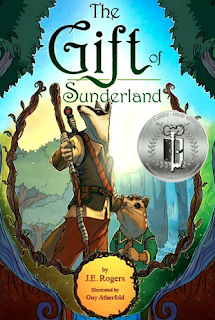“RUN AND FIND OUT!”
I was first introduced to the mongoose when I met Rikki-Tikki-Tavi. In the words of the mongoose family, from Rudyard Kipling’s story, “Run and find out,” and that’s what we’re going to do. Let’s meet and learn a bit about this famous, fearless literary mammal.
There are approximately thirty-four species of mongooses worldwide, twenty of which live on the African continent. We can’t cover them all, but we’ll talk about them generally and mention a few of the unusual ones.
For example, it’s unusual to find that the International Union for Conservation of Nature (IUCN) does not have sufficient data to tell us the status of a particular animal. However, this is the case with Pousargue’s Mongoose. The only species in the genus Dologale, Pousargue’s Mongoose lives in the savannas of the Democratic Republic of the Congo, western Uganda, South Sudan and the Central African Republic. The IUCN and arkive.org promise that they will be posting information on this particular mongoose soon, but right now, we know very little.
Photo credit: Mark Best, Your Shot
Mongooses range in size from nine inches to twenty-two inches, excluding the tail. They range in weight from eleven ounces to eleven pounds. Their long slender bodies and heads make them look like they are related to the weasel family. However, the mongoose is a species unto itself.
Banded Mongoose – Photo Credit: D. Gordon E. Robertson
Unlike Pousargue’s Mongoose, the Common Dwarf Mongoose (Helogale parvula) is well known and there is little concern for this species. They live in a symbiotic relationship with rough-scaled plated lizards. The lizards share their burrows with them and eat their dung. Yuck! They also have a symbiotic relationship with the red and yellow-billed hornbills. The birds eat insects the Dwarf Mongoose disturbs as it’s moving through the grass, and in turn, the hornbill warns the mongoose when predators are nearby.
Dwarf Mongoos – Photo credit: Miika Silfverberg
Mongooses are not very picky eaters. They will dine on rodents, birds, reptiles, frogs, insects and the occasional fruit, nut and seed. They are clever mammals and have been known to throw an egg to break it in order to get at the meal that’s inside. As we know, from Rikki-Tikki-Tavi, some species are bold enough to attack venomous snakes and have them for dinner. The Indian Grey Mongoose is famous for doing this.
Mongoose vs. Cobra, it’s a scary thing to watch.
The mongoose was introduced onto the Hawaiian Islands in order to control the rat population. As we have learned before, introducing a species into an environment where they don’t belong can have devastating effects. This is the case with those introduced into Hawaii because now the introduced mongooses threaten native species.
Generally speaking, the mongoose is a terrestrial animal, but some species climb trees, while others like a watery environment, like the Marsh Mongoose in the below picture.
As we said above, the Indian Grey Mongoose is known for its ferocity and its ability to kill and eat a cobra. They are not to be trifled with as we learned from Rikki-Tikki Tavi’s story. The below picture by, Johann Grobblaar pretty much says it all. And don’t forget to watch the video posted above.
Photo credit: Johann Grobblaar
To learn more about mongooses, visit the following sites:
One last thing before I go. Did you know that the Meerkat is a mongoose! Well, now you do.
Good-bye
from Australian Fantasy Adventures. I hope you enjoyed this week’s post about
the mongoose. There’s always some interesting animal to learn about so please
come back next week.
Enjoy!
Jeanne
E. Rogers, Award Winning Author
The Sword of Demelza and The
Gift of Sunderland
Middle-Grade
Fantasy Where Endangered Animal Heroes Roam the Pages!








